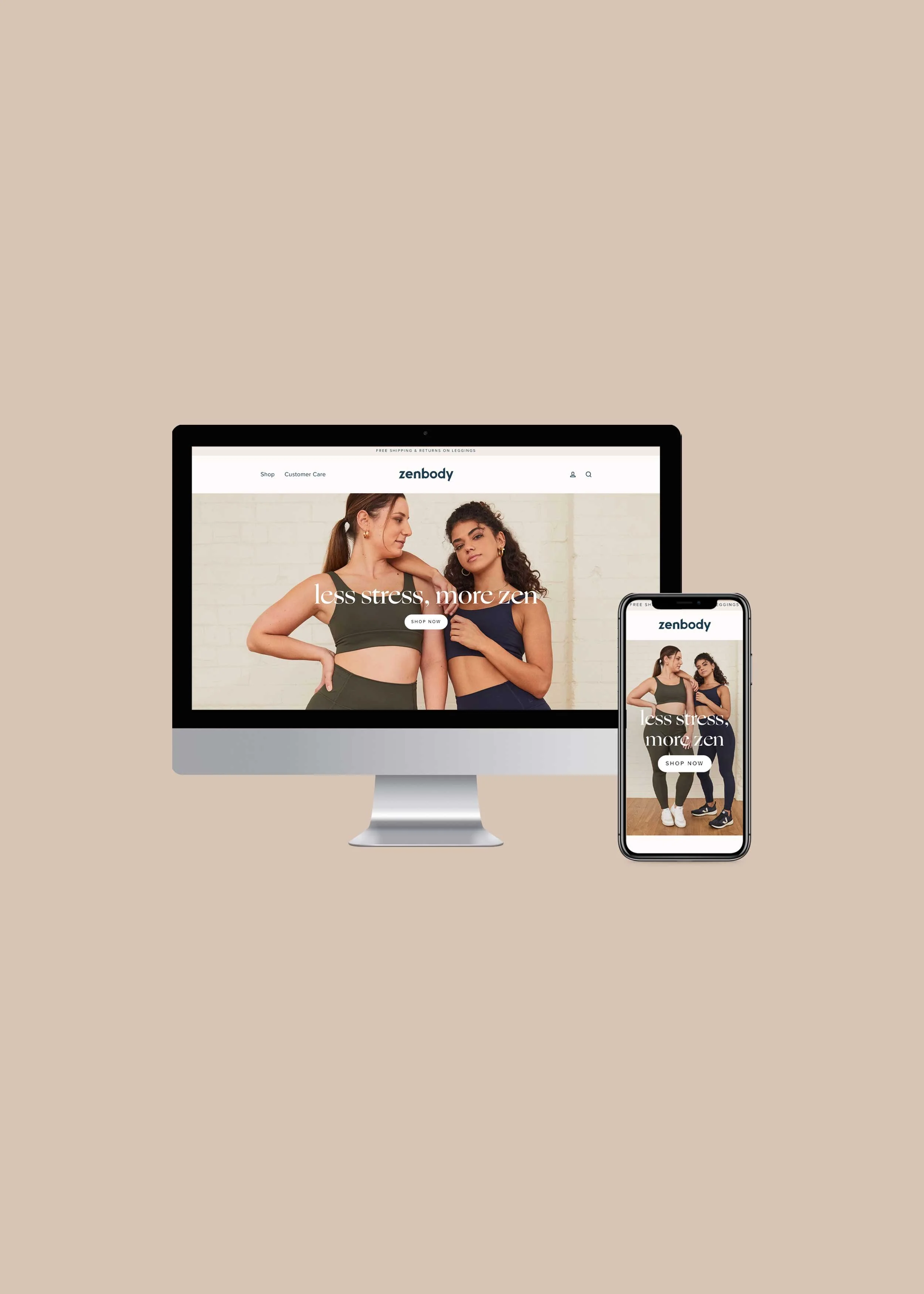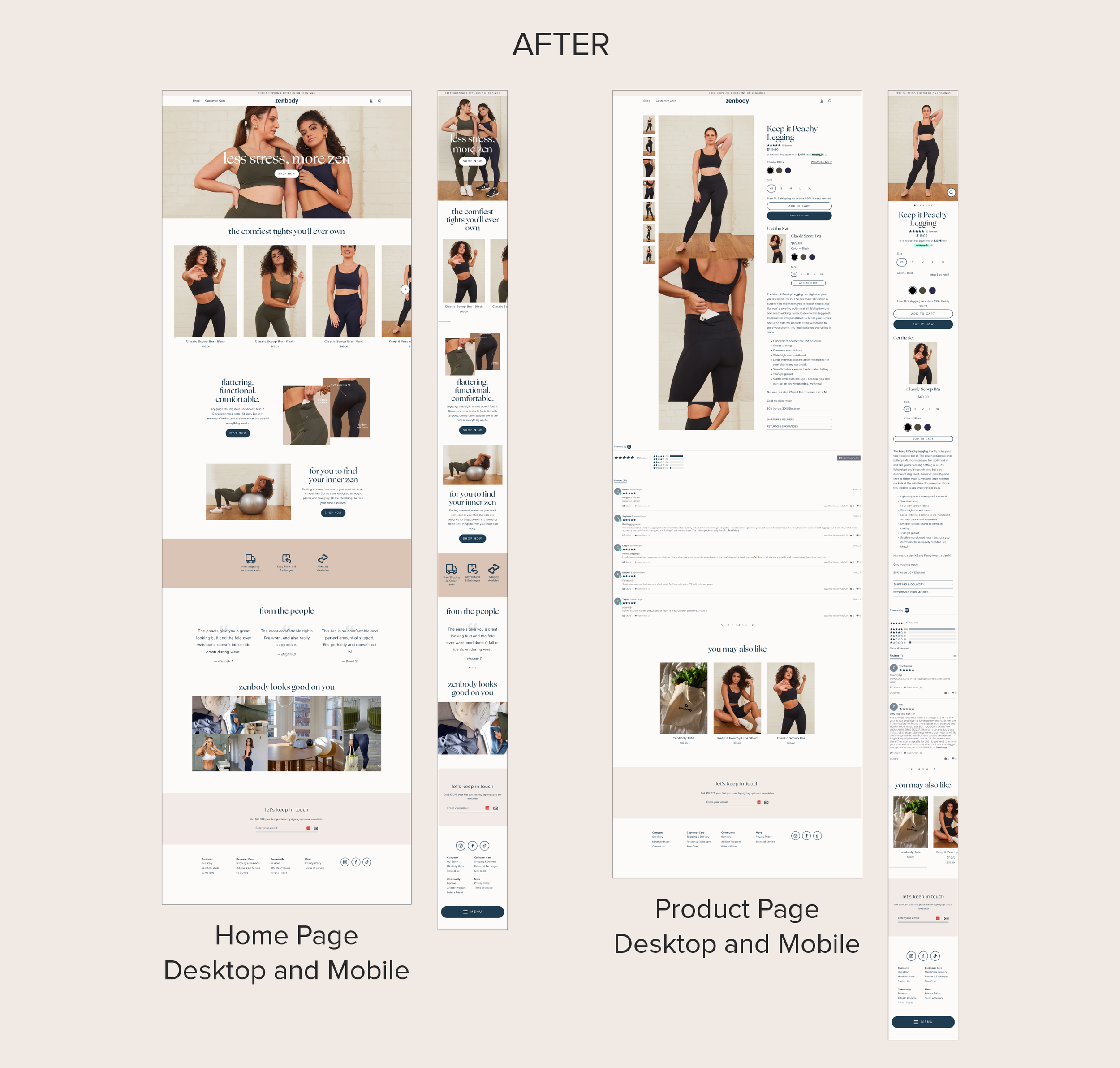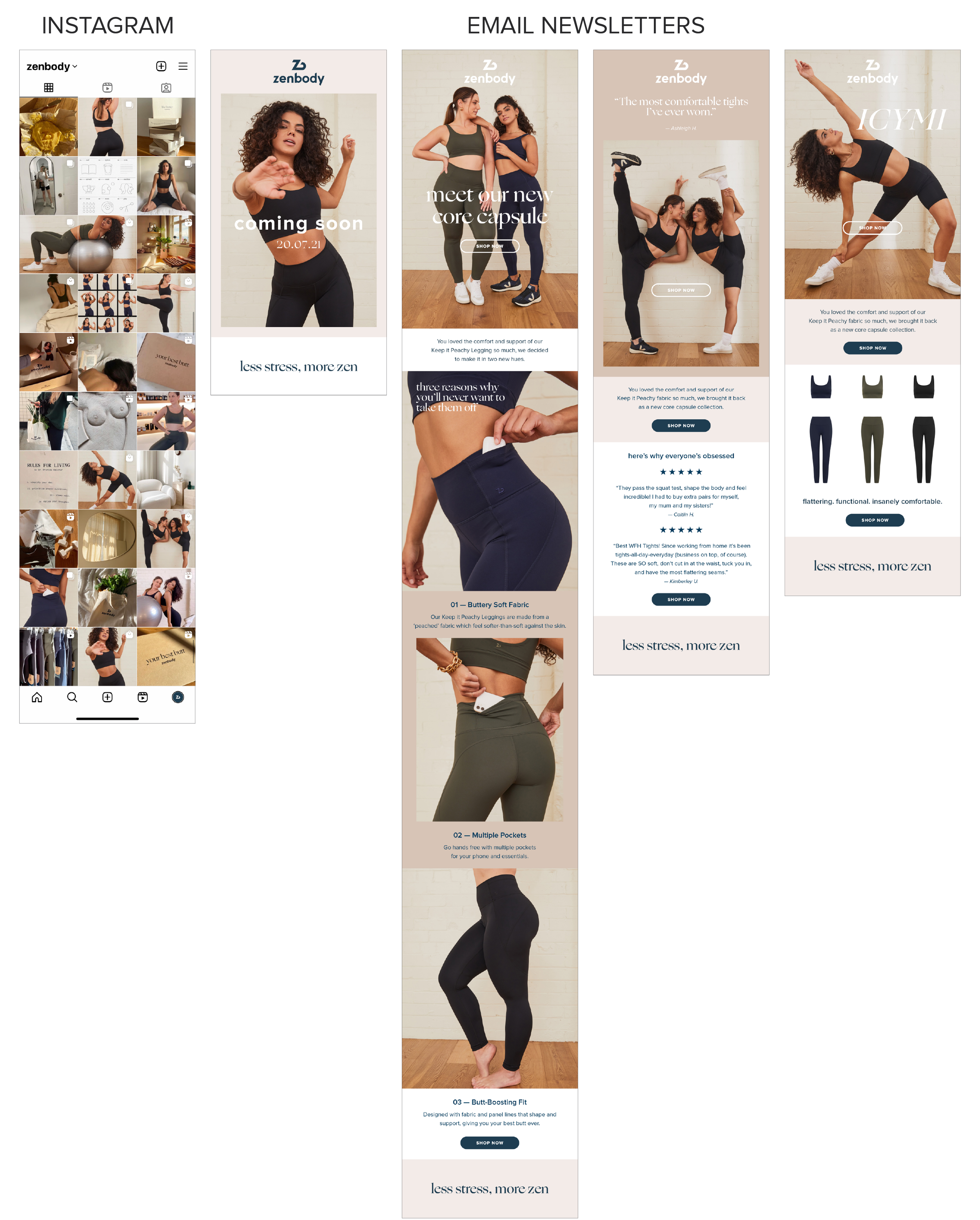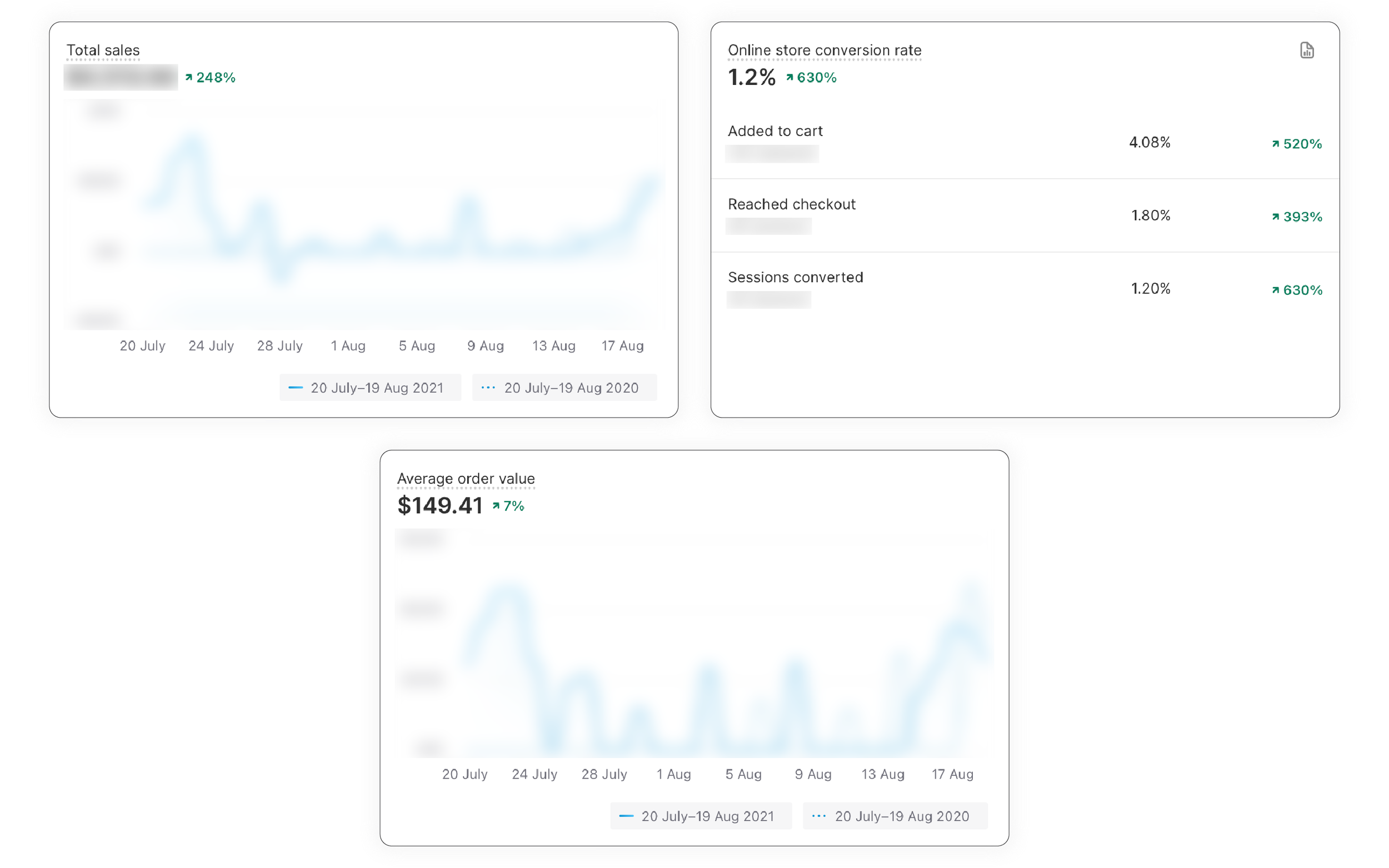zenbody
zenbody is a lifestyle apparel brand for mindful activities such as yoga, barre and pilates. As a solo founder, I designed the entire user experience. I considered every customer touch point, from swing tags to social media and, most importantly, the website for converting sales. I spent five years in total building zenbody from the ground up, and it taught me invaluable lessons about life, business and letting go. This case study explores a re-design of the website.
My role
Founder (i.e. wearing ALL of the hats)
THE PROBLEM
Less stress, more zen
The brand's value proposition was about overcoming the rising tide of anxiety through mindful movement. zenbody started as a yoga label but grew to include pilates and barre as I got to know the customer.
Over time, the brand identity and messaging also evolved, and I needed to refresh the website to reflect those changes. On an emotive level, customers were drawn to the brand's aphorism, but on a practical level, they just wanted bras and leggings that made their boobs and bum look good. As a lesser-known brand, my challenge was building a website that instilled consumer confidence to turn clicks into customers.
How might we instill consumer confidence to turn clicks into customers?
THE SOLUTION
Designing for conversion: optimising visuals, copy and social proof
The homepage was re-designed as a vertical storybook, with a clear call-to-action to "Shop Now". Imagery was refreshed, and copy was re-written, using language that reflected what customers wanted, e.g. "comfort" and "support". Social proof was also incorporated as pull quotes from customer reviews and a link to the live Instagram feed, which showcased the zenbody community.
The product pages were optimised for conversion. I integrated reviews from customers as it helped to build trust. This was collected from an automated email sequence triggered after a customer placed an order. To reduce the bounce rate, I incorporated all the information about sizing, shipping and returns as pop-ups and drop-downs so that customers wouldn't have to navigate away from the product page. I also implemented a 'Get the Set' feature to increase the average order value.
THE PROCESS
Double diamonds and double d’s
I built zenbody prior to doing any formal training in UX, so I didn't know about concepts such as 'Design Thinking' and the 'Double Diamond'. However, I did lean into advice from popular business books such as 'The Lean Startup' by Eric Reis and 'Building a Storybrand' by Donald Miller. I treated market stalls as market research and got to know my customers in yoga and pilates studios. The final iteration of the brand was based on the following insights:
Customers wanted simple activewear pieces that could double as streetwear
Customers wanted comfort and support i.e. bras and leggings that made their boobs and bums look good
Customers wanted to see more diversity in body type and skin tones
I adjusted the product and marketing accordingly. For the website, I followed eCommerce best practices and designed for conversion by optimising visuals, copy and social proof. I also considered the customer journey, from social media to email newsletters and product packaging, ensuring a consistent experience.
THE IMPACT
An increase in sales
In comparison to the previous year, sales increased by 248%, the online store conversion by a (whopping) 630% and the average order value by 7%.
Granted, this increase came from a combination of changes - but having an optimised website was an important part of the sales funnel. It ensured that marketing dollars weren’t leaking out from a bucket with holes.
THE LEARNINGS
Solving the right problem for the right audience at the right time
Eventually, I let go of the business. It didn't matter how hard or smart I worked, I'd entered the market at the wrong time. The activewear market was saturated. I didn't have the money or manpower to compete with Nike or newcomers like Outdoor Voices on their product assortment and marketing ad spend.
I had an idea for a direct-to-consumer brand and spent two years taking it to market (two years!). This was two years too long on the 'delivery', and I had completely bypassed the 'discover', 'define' and 'development' stages of the 'Double Diamond'. Had I applied this approach and built a business by first discovering the customer pain points and defining the right problem to tackle, things might have been different...
Next case study →





